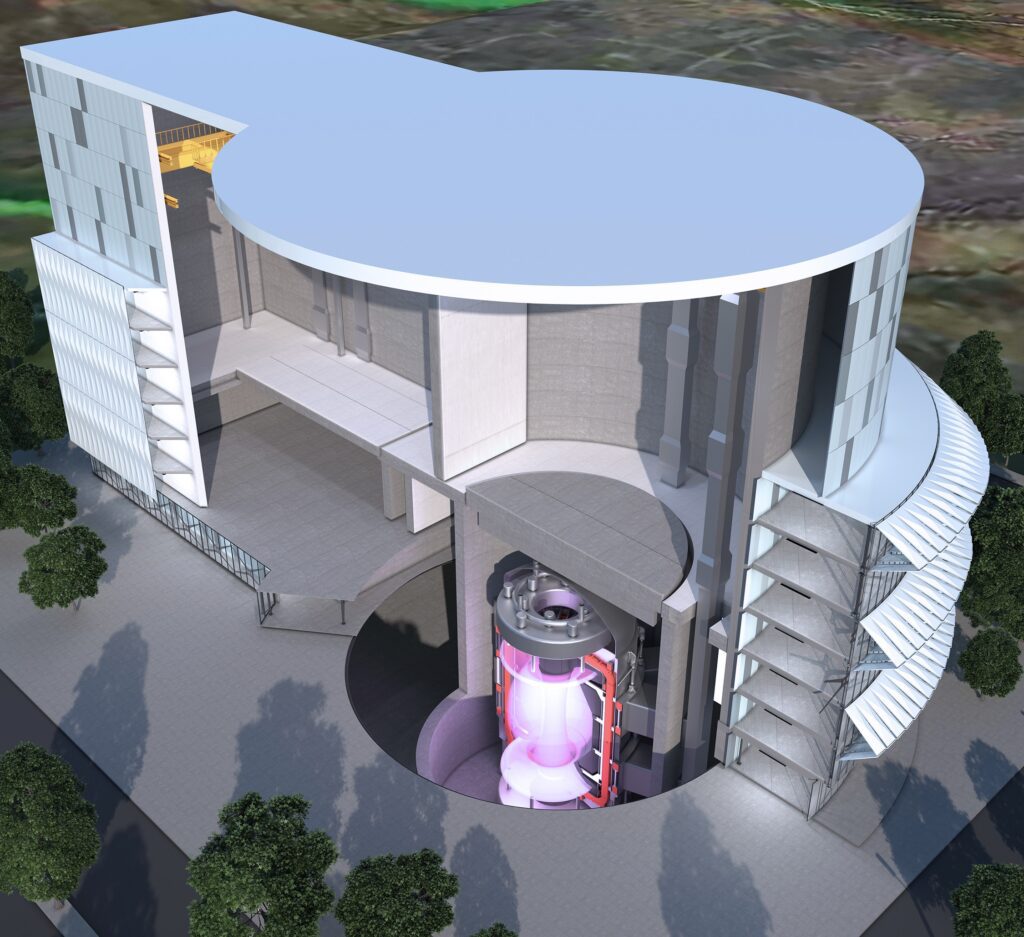UK Picks Coal Power Plant as Site for Nuclear Fusion Energy Prototype
The UK Atomic Energy Authority’s (UKAEA’s) ground-breaking STEP (Spherical Tokamak for Energy Production) prototype fusion energy plant will be built at the site of the West Burton power station, a 1-GW coal-fired plant owned by EDF in North Nottinghamshire, in the East Midlands region of England, the UK government announced on Oct. 6.
UKAEA, which carries out fusion energy research on behalf of the UK government, said the prototype will be “designed and constructed at the coal plant site to demonstrate the ability to put net electricity on the grid.” It could “also pave the way to enable future commercial fusion energy plants to be commissioned and constructed,” the agency said.
Site selection for the STEP nuclear prototype plant, which could have many features of a fully operational power station, represents a marked milestone for fusion development and puts it closer to fruition. The UKAEA’s ambitions to build a STEP prototype have been much-watched, given that it is considered a pioneering project in the race to develop fusion energy, an energy resource that essentially replicates the process which powers the sun.
A Government-Backed Fusion Prototype
Fusion energy (sometimes called nuclear fusion, though this is discouraged to avoid confusion with nuclear fission) harvests the large amount of energy released when light atomic nuclei (such as hydrogen) fuse together to form heavier ones (such as helium). To enable this “fusion,” fuel is heated to very high temperatures forming a plasma in which fusion reactions take place.
| For an in-depth look at how fusion energy works and major advances in recent years, see POWER’s June 2020 feature, “Fusion Energy Is Coming, and Maybe Sooner Than You Think.” |
Experts have long-lauded its possibilities as the perfect energy resource: Not only could it provide a virtually limitless of highly concentrated, baseload energy, generating that energy produces no greenhouse gas emissions or long-lived radioactive waste. And, the risk of accidents with a fusion plant is limited: if containment is lost, the fusion reaction simply stops.
The STEP prototype will be a compact spherical tokamak (a magnetic confinement device), much smaller than other fusion energy programs, such as the International Thermonuclear Experimental Reactor (ITER). “Most fusion reactors are built in the shape of a ring doughnut while the spherical plant is shaped more like a cored apple. This shape improves efficiency in the magnetic field and potentially reduces the plant’s cost,” UKAEA said.

Backed with £220 million of government funding for the first phase of STEP, UKAEA expects to produce a “concept design” by 2024. That will be followed by Phase 2, which will involve detailed engineering design. During Phase 2, the agency will also work to seek “consents and permissions to build the plant.” Phase 3 will involve the construction of the prototype power plant. For now, UKAEA is targeting first operations in the early 2040s.
Coal Plant Picked After Rigorous Assessment
UKAEA on Thursday said the government picked the West Burton site “following a rigorous assessment process over almost two years.” The agency said it long-listed 15 locations for the STEP prototype following an open call for sites in December 2020. In March 2021, it wrapped up collecting public opinion on where to site the pioneering project. It then narrowed its selections to five after assessments in October 2021. A second round of assessments in the spring resulted in UKAEA making its final recommendations to the Secretary of State in May 2022, it said.
The West Burton site on the River Trent near Gainsborough, Lincolnshire, England houses two power plants. West Burton A, owned by EDF, is a coal-fired power station commissioned in 1966, and West Burton B is the site of a combined cycle gas turbine plant that was commissioned in 2013. EDF sold West Burton B to EIG, a global energy project investor, in September 2021. While EDF had mulled the closure of West Burton A in September 2022, the utility this June announced it would keep the two-unit plant open until March 2023.
“The other sites shortlisted to host STEP were Ardeer, North Ayrshire; Moorside, Cumbria; Goole, East Yorkshire; and Severn Edge, Gloucestershire,” the government said.
“Selecting the location of the STEP prototype plant is a huge, visible moment in the challenging and long-term endeavor of bringing fusion energy to the grid,” said Professor Ian Chapman, UKAEA Chief Executive. “West Burton is a natural fit for the STEP programme with a rich industrial heritage now being developed and repurposed for a low carbon future. It really is ‘from fossil fuels to fusion,’ “ he said.
—Sonal Patel is a POWER senior associate editor (@sonalcpatel, @POWERmagazine).